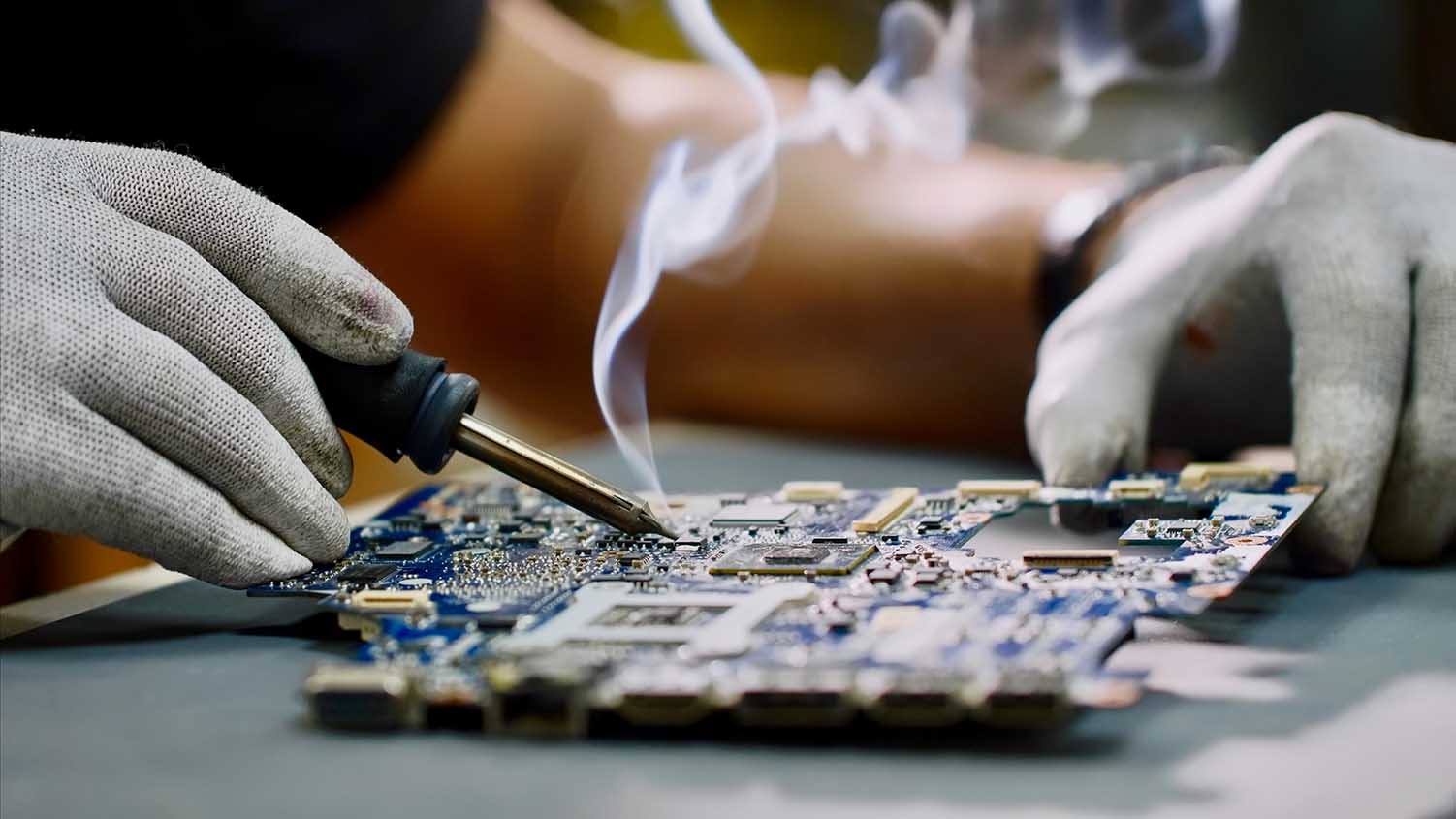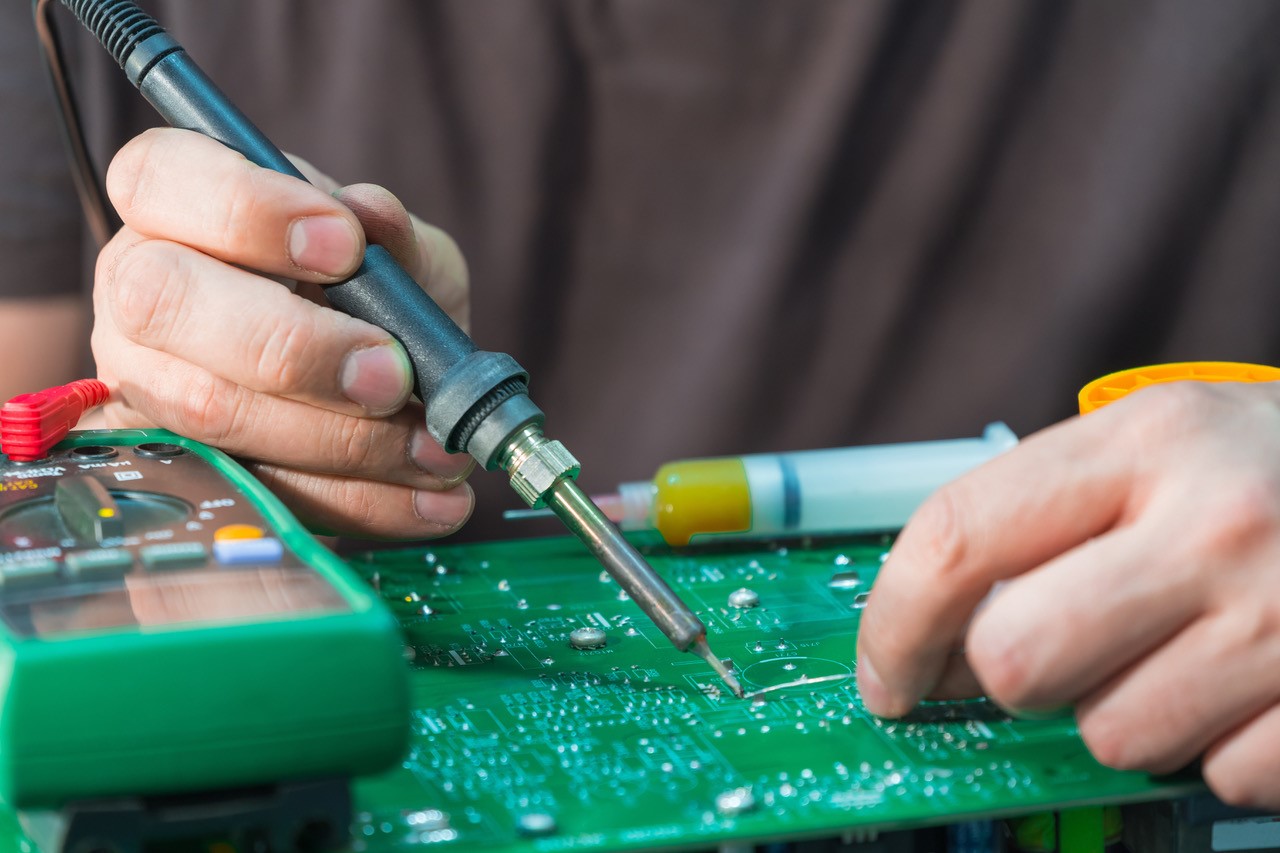Lead Vs Lead Free Solder: Which One Is Better?
The discussion on lead vs lead free solder has been going on since the invention of lead free solders in 1996. While some solderers tout the reasons using lead solders is better, others highlight the risks associated with them.
However, the restrictions placed on the use of lead solders simmered the heated debate down to a level where no one could argue against using lead free solders in the commercial and industrial sector. But soldering is quite prevalent among hobbyists too.
Therefore, we still find hobbyists caught up in the lead vs lead free solder debate. Therefore, we decided to contribute our own two cents to the much popular discussion.
This article will outline the key differences of lead vs lead free solder so that you can make an informed decision about what to choose.

Solders: Holding Electronic Parts Together
Solders keep tiny parts inside electronic equipment, like circuit boards, in place. These are metal alloys that melt at considerably lower temperatures. Once melted, they flow on the two components and binds them together on solidification.
Solders hold a distinction from average glues and metal epoxies because unlike glues, solder are electrically conductive. That means they allow electric current to flow between the two components that they join together.
Metallic solders come in different forms. Usually, for manual soldering, people prefer buying soldering wires or ribbons. Wave soldering uses molten solder and reflow soldering necessitates solder paste.
A traditional solder is made up of tin and lead. However, because lead is a toxic element, lead free solders are gaining popularity, specially in the commercial and industrial sectors. Let’s discuss the two main types of solders in a little more detail.
SnPb Lead Solders
Lead solders are metal alloys of lead and tin. These solders are often called SNPB solders after the chemical symbols of the component elements Tin (Sn) and Lead (Pb). These solders were popular back in the day and are still in use.
However, the ban on lead pipes and the use of lead solders in water plumbing due to lead leaching into drinking water took its popularity in the industrial and commercial sectors away.
Moreover, lead soldering generates lead dust and fumes that are hazardous when inhaled or ingested. Therefore, they were later restricted under the RoHS as a hazard to human health and the environment.
This scenario led to the development of lead free solders and the subsequent onset of the ongoing debate on lead vs lead free solder.
Lead Free Solders
Lead free solders consist of tin as the major component with other metallic elements present in small quantities.
Tin-Copper solders and Tin-Silver-Copper solders are the two most common types of solders that are used in lead free soldering. These alloys contain more than 95% tin and copper and silver make up the rest of the composition.
Lead free solders have a melting point that is slightly higher than the traditional lead solders. Melting at a higher temperature is one of the features of lead free solders that make them undesirable among the hobbyists’ community.
Some Properties of Lead vs Lead Free Solder
The properties of a material are what defines its distinction from another material. The difference in properties of lead vs lead free solder influence the entire soldering process. Because lead free solders melt at a higher temperature, they increase process lead time and require alterations in parameters to ensure proper product specifications.
We will shed light on some of the most common properties of lead vs lead free solder. These include composition, density, electrical conductivity, and shear strength.
The density of a solid is defined as the amount of mass held inside a given volume. While electrical conductivity is the ease of flow of current through the material and shear strength is the material’s ability to withstand shear stress.
Composition
A typical lead solder consists of 60% tin and 40% lead. These solders are called Sn60Pb40. There is another type of lead solder that contains 63% tin and 37% lead and is called Sn63Pb37.
On the other hand, lead free solders come in a variety of compositions. As we mentioned above, it consists of 95% tin and other compounds including silver, copper, antimony, bismuth, nickel, etc.
Melting Point
The melting point of lead free solders lies between 180-190 °C. While lead free solders, as mentioned before, melt at slightly elevated temperatures around 217-220 °C. However, some lead free solder alloys also have melting points shooting above 300 °C. Like Silver-Bismuth solder that melts between 262-360 °C.
Density
The density of SnPb solder is around 8 g/m3. While that of Sn-Ag-Cu or Sn-Cu lead free solder lies around 3 g/m3.
Electrical Conductivity
The electrical conductivity of lead solder is 11.5 IACS while that of lead free solder is 15 IACS.
Shear Strength
Lead free solders like SnPb solders have a shear strength of 23 MPa and lead free solders like Tin-Copper or SAC solder has a shear strength of 20-27 MPa.
Comparing Lead vs Lead Free Solder: Pros and Cons
Everything in the world has its pros and cons. And the selection of something over others boils down to your specific requirements. The same goes for lead vs lead free solder. Following are some of the pros and cons that lead and lead free solders have over one and the other.
Lead vs Lead Free Solder: The Pros
Lead Solder
- Lead solders feature good wettability. Wettability is the property of the solder to melt and adhere to the parent metal. Good wettability means it can liquefy properly and join the metals nicely.
- Low melting point. Probably the only feature that gives lead solders an edge over their lead free counterparts is the lead solder’s low melting point. Because of a low melting point, lead soldering is safe for high heat-sensitive material.
- Lead solders form a shiny and smooth joint. This feature only has to do with the appearance of the solder joint and plays no significant part in its performance.
- Ease of use. The Lead solder’s low melting point and good wettability make it easier to use as compared to lead free solders.
Lead Free Solder
- Lead free solders are compliant with RoHS and this is their most significant advantage in the commercial sector. These solders allow manufacturers to produce and supply lead free electronic components.
- Lead free soldering leads to stronger solder joints. Lead is a softer metal that leads to weaker solder joints. Therefore, lead free solder joints are more mechanically strong and reliable.
- Low wettability. The wettability of lead free solders can be an advantage or a disadvantage, depending on your perspective. Because of its bad wettability, lead free solders prevent the formation of solder bridges when soldering closely placed pins.
Lead vs Lead Free Solder: The Cons
The Lead Solder
- Regulatory authorities have restricted the use of lead solders and this is their single most significant disadvantage.
- Lead is a toxic element and can have adverse effects on human health when inhaled or ingested. Lead soldering requires extreme care and caution. You must wash your hands thoroughly after lead soldering and dispose of waste properly.
- Lead not only runs a health risk but is harmful to the environment as well.
Lead Free Solder
- Since lead free solders necessitate a higher working temperature, therefore lead free soldering runs a higher risk of damaging the circuit board and tiny, heat-sensitive components.
- Because of the higher melting temperature, lead free solders may also have higher chances of oxidation.
- Lead free solders are harder to work with. Because of the higher melting point, chances of oxidation, and bad wettability, lead free solders present difficulty in use. That’s why most novices start learning soldering with lead solders.

Conclusion
The lead vs lead free solder debate will keep going on until lead free solders are made to compete with lead solders in terms of ease of use.
Lead free solders have their pros which are quite significant if you are a well-reputed commercial manufacturer.
However, if you are a hobbyist or are learning to solder, you might find the pros of lead solders weighing heavier than its cons.
So, the discussion on lead vs lead free solder: which one is better? boils down to your expertise with soldering, application, and whether you are doing it on a commercial or domestic level.
For More Information, Contact Us Today!




